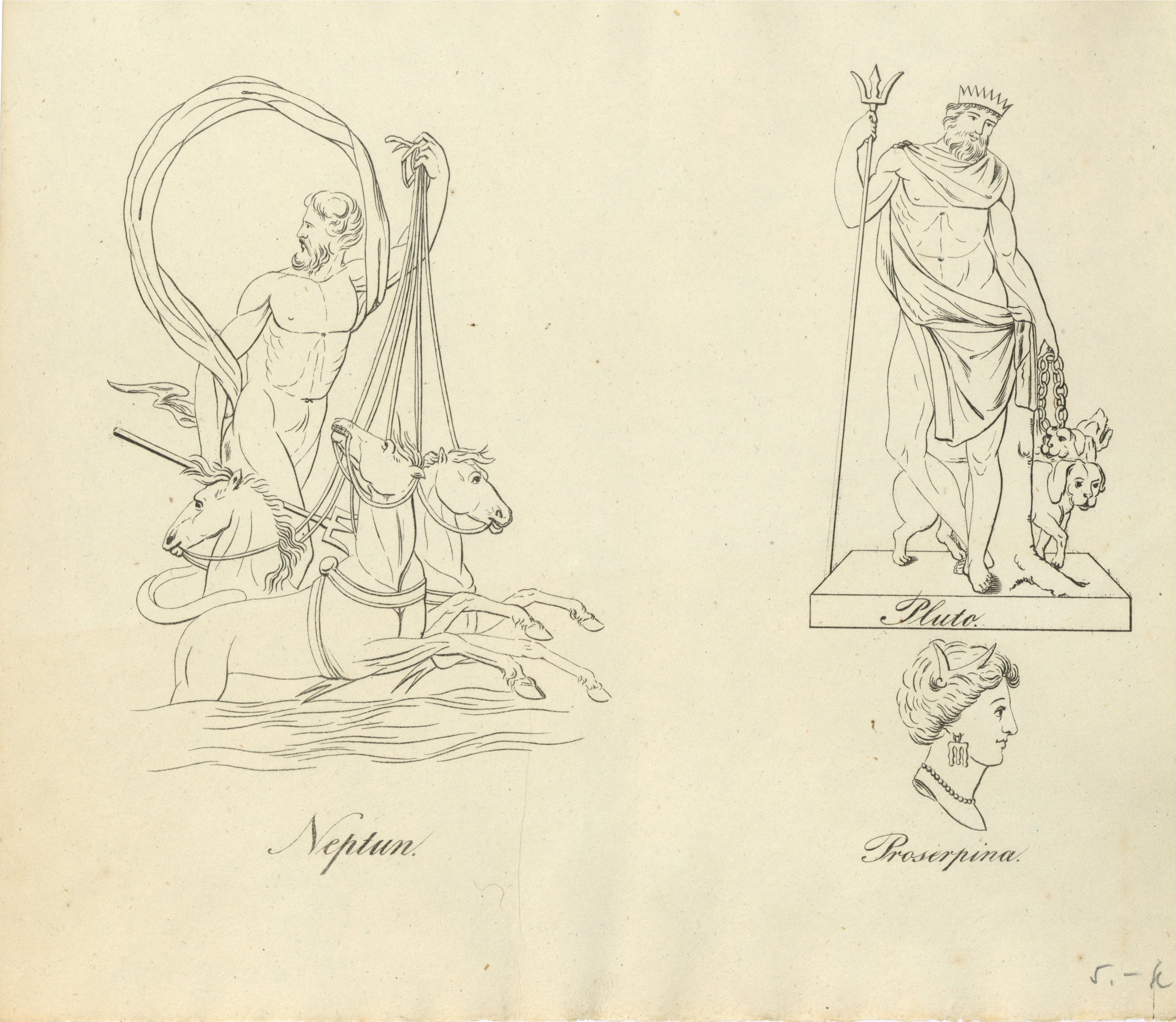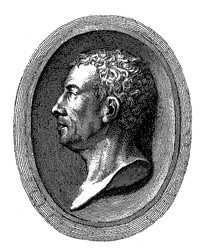Die linke Blatthälfte zeigt Neptun mit einem Gespann von drei Pferden, die durch Wellen galoppieren. Der Gott ist nackt, lediglich ein Tuch umweht ihn. Mit der linken Hand hält er die Zügel, mit der Rechten den Dreizack. In der rechten Bildhälfte ist oben die Statue des Gottes Pluto, stehend auf einer Plinthe, mit dem Höllenhund Kerberos zu seiner Linken dargestellt. Er hält diesen mit einer Kette. Mit der rechten Hand hält er einen Dreizack. Der Unterweltsgott trägt eine Krone und ist mit einer gegürteten Chlamys bekleidet. Unter ihm ist im Profil der Kopf seiner Gattin Proserpina abgebildet. Der Kopfausschnitt erinnert an Gemmendarstellungen. Der lineare, umrissbetonte Stil des Stichs steht in der Tradition des Klassizismus.
Bez. u.l.: Neptun.
r. in der Plinthe: Pluto.
u.r.: Proserpina.
en

